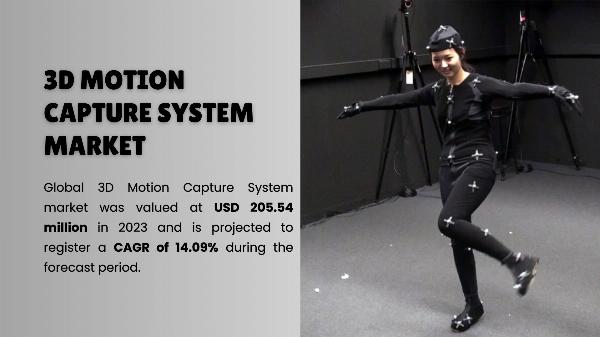AMC Entertainment’s Unusual Options Activity Sets Up for a Long Straddle. Should You Bite?

AMC Entertainment (AMC) had eight unusually active options on Thursday out of 1,325 on the day. The beleaguered theater chain’s stock is down 32% in the past year, trading in penny-stock territory for 19 months and counting.
One of the key meme stocks that made headlines in 2021, its stock traded at an all-time high of $726.20 on May 31, 2021. It has lost 99.5% of its value over the past four years and six months. Contrarian investors might look at its current share price and think it can’t go much lower, as this year’s box office is setting up to be relatively strong.
More News from Barchart
-
Insider Trading Alert: Here's Who Bought Nvidia and AMD Stock Before the U.S. Chip Deal with China
-
AMZN Trade Idea: Capture Gains Without Chasing the Stock
-
3 Unusually Active Cash-Secured Puts in Quality Companies for Attractive Income
-
Our exclusive Barchart Brief newsletter is your FREE midday guide to what's moving stocks, sectors, and investor sentiment - delivered right when you need the info most. Subscribe today!
That’s arguably true.
Looking at AMC’s eight unusually active options from Thursday, there is one put option to go with seven call options, ranging in strike prices between $3.50 and $5.00.
However, it is the Aug. 15 $4 put and call that set up nicely for a long straddle, which is a bet that volatility ramps up over the next 29 days. With a net debit of just $1.00 ($100), it’s tempting to take a flyer.
Here’s why you should think twice.
Have an excellent weekend.
The $4 Long Straddle
At yesterday’s closing price of $3.48, the call is OTM (out of the money) by one strike, while the put is ITM (in the money) by one strike. As mentioned, the net debit is $1, with an upside breakeven of $5.00 and a downside breakeven of $3.00.
The profit probability is 36.9%. That’s about normal for this low-probability, high-reward options strategy. As I said, it’s tempting to take a flyer due to the low cost.
However, the $1.00 net debit is 28.7% of its Thursday closing price. That’s exceptionally high for this play. You want to spend between 5% and 10% of the share price. It lowers your risk profile because the share price doesn’t have to make nearly as big a move to break even.
But putting aside the economics of this particular long straddle, let’s consider the company itself. I’ll return to the options aspect after doing this.
Debt Is a Big Problem
As of March 31, AMC had $8.30 billion in total debt, 6.6 times EBITDA (earnings before interest, taxes, depreciation and amortization). While that is significantly lower than its 2022 levels, it is still substantial debt for a company that pays out $426 million in annual interest to service the debt.
Story continuesIn August 2022, I wondered if AMC would go bankrupt. At the time, it had an Altman Z-Score of -0.56. The Altman Z-Score indicates the likelihood of a company entering bankruptcy proceedings within 24 months. Anything under 1.81 suggests a company is distressed.
“The world’s largest cinema chain finished the second quarter with $10.46 billion in total debt -- $5.08 billion in operating lease liabilities and $5.38 billion in long-term debt -- versus $965.2 million in cash and short-term investments, for $9.49 billion in net debt,” I wrote on Aug. 24, 2022.
“That resulted in $355 million in interest payments over the past 12 months through June 30, the company’s highest annualized interest expense over the past decade.”
In hindsight, we know that it did not go bankrupt. That’s the good news. The bad news is that its financial situation is worse. For example, while its total debt today is over $2 billion lower than in mid-2022, its interest expense is $45 million higher. Furthermore, its Altman Z-Score today is -0.96, even worse than in 2022.
The debt remains a real problem.
Revenue Has a Ceiling
In March 2023, I discussed the company’s revenue generation, suggesting that its success is tied to the strength or lack thereof of the box office.
“According to Semafor, the domestic box office is way below the pre-pandemic highs. It might never return to the 2019 levels when ticket sales in a single quarter were well above $3 billion. Since the beginning of 2020, there’s only been one quarter where box office sales jumped over $2 billion. It’s been downhill ever since,” I wrote on March 7, 2023.
How’s the box office today? Better, but far from perfect.
In Q1 2025 and Q2 2025, the domestic box office was $1.03 billion and $2.77 billion, respectively. The good news is that there have been seven quarters out of 10 with a box office of $2 billion or more since the beginning of 2023. That’s something you can hang your hat on.
The problem is that the domestic box office in 2019 had two quarters exceeding $3.4 billion, totalling $11.36 billion for the year, slightly less than the record of $11.89 billion set in 2018. In 2018 and 2019, 993 and 919 films were released, the two highest in history. By comparison, there were 675, with 2025 on pace to achieve a similar result.
It’s been years since movie theaters made money without raising the price of tickets or food and beverages. Without this inflation and a smaller number of releases, an artificial revenue ceiling exists. It won’t go away without some revolutionary change to the movie theater business model.
It’s a simple calculation: the average price per ticket plus the average food and beverage spent per ticket buyer equals the topline revenue. Sure, ad revenue exists, but it’s a tiny fraction of the total.
The Bottom Line
I didn’t even mention the fact that the movie theater business model has virtually zero recurring revenue, the kind tech companies feast on. As a result, AMC and other chains like it are forced to promote their product (movies) constantly and hope for the best. That’s a costly customer acquisition process.
Even professional sports, with ballooning player costs, have figured out how to generate multiple recurring revenue streams that make customer acquisition so much cheaper.
The movie theater business doesn’t make a lot of economic sense. It will always exist because people love movies, but it will never reach the level of Nvidia (NVDA). It’s that simple.
As for the long straddle mentioned earlier, I wouldn’t bite for three reasons.
First, AMC is a terrible business. Second, you can really only make money on the downside given the stock’s price movement over the past 12 months. Finally, you can spend $100 far more efficiently by looking elsewhere.
On the date of publication, Will Ashworth did not have (either directly or indirectly) positions in any of the securities mentioned in this article. All information and data in this article is solely for informational purposes. This article was originally published on Barchart.com














